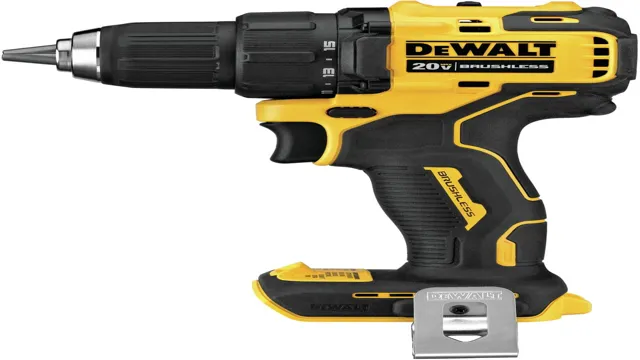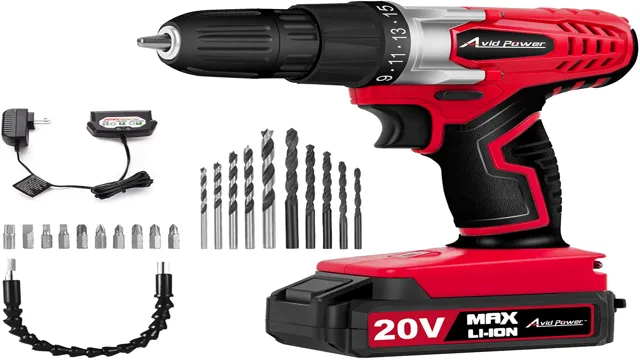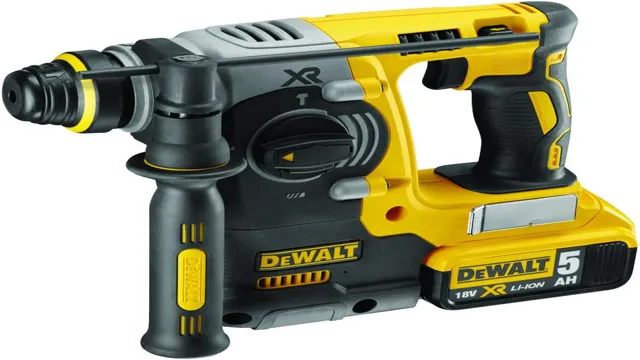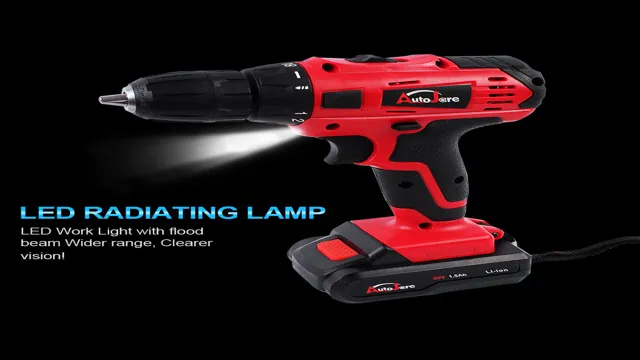What is Better for a Cordless Drill 20V or 18V: A Comprehensive Guide

Cordless drills have become an essential tool in every DIYer’s and professional’s arsenal. They provide convenience, portability, and versatility that are unmatched by their corded counterparts. However, choosing the right cordless drill can be a daunting task, especially with so many brands and models available in the market today.
One of the most common questions people have is whether a 20V or an 18V cordless drill is better. It’s like choosing between two superheroes – both have their unique strengths, but which one is better overall? We’ll dive deeper into this topic and discuss the differences between the two and what you should consider before making your purchase.
Understanding Voltage in Cordless Drills
When it comes to cordless drills, the voltage rating is one of the most critical factors to consider. The two most popular voltage options are 18V and 20V. However, it’s essential to understand that the voltage rating doesn’t determine the power or torque, but rather the strength of the drill’s battery.
A higher voltage-rated drill will typically have a larger capacity battery, which means it will last longer on a single charge and have more power. Additionally, a 20V drill may have faster speeds and better control compared to an 18V model. Ultimately, the choice between the two comes down to the user’s specific requirements, such as the type of tasks they’ll be using the drill for and how often they need to use it.
What Does Voltage Represent in Cordless Drills?
Voltage When it comes to choosing a cordless drill, voltage is an important factor to consider. Voltage represents the amount of power that the drill can produce, and is usually indicated by a number followed by “V”. The higher the voltage, the more power the drill can provide.
However, this also means that the drill’s battery will drain quicker, making it necessary to recharge it more often. It’s important to choose a voltage that is appropriate for the tasks you’ll be using the drill for. For light tasks like drilling holes in drywall or assembling furniture, a lower voltage drill (around 12V) works just fine.
For heavier duty tasks like drilling through metal or thick wood, a higher voltage (18V or 20V) is necessary to provide the necessary power. When choosing a cordless drill, be sure to take into account the voltage, along with other factors like battery life, size, weight, and ease of use.

How Does Voltage Affect Power and Torque?
When it comes to cordless drills, understanding voltage is essential for getting the most out of your tool. Voltage directly affects both power and torque, two critical factors in any drill’s performance. In basic terms, voltage refers to the amount of electrical energy flowing through the drill’s battery.
As voltage increases, so too do power and torque levels. This is because more voltage means more resistance to electrical flow, which leads to increased power output. Think of it like a water hose- the more pressure (voltage) you have, the greater the water flow (power).
But it’s important to keep in mind that higher voltage also means a heavier battery and potentially shorter battery life. So, it’s crucial to find the right balance of voltage and battery weight for your specific needs. When choosing a cordless drill, be sure to consider the voltage alongside other factors like battery life, weight, and overall power and torque.
Advantages of 20V Cordless Drills
When deciding between a 20V or 18V cordless drill, there are undoubtedly some advantages to going with the former. One of the main benefits is the increased power. A 20V drill can easily handle tougher tasks, especially when it comes to driving larger screws or boring holes in more robust materials, such as thick wood or metal.
Additionally, 20V drills often come with longer-lasting batteries, meaning that you will be able to work for more extended periods without needing to recharge. This is particularly useful if you are tackling a larger project or are working in an area without easy access to an outlet. Lastly, many 20V drills come with improved features, such as greater torque and speed variations, making them more versatile and able to tackle a broader range of applications.
All in all, while both 18V and 20V cordless drills certainly have their advantages, it is hard to argue with the increased power and flexibility that the latter option offers.
More Power for Heavy-Duty Tasks
One of the biggest advantages of using a 20V cordless drill is the extra power it provides for heavy-duty tasks. These drills are designed to handle tougher jobs, such as drilling through thick wood or metal, without bogging down or losing power. This is because 20V cordless drills are equipped with high-capacity batteries that can deliver more torque and speed than lower voltage models.
With this extra power, you can work faster and more efficiently, without having to worry about the drill struggling or overheating. Plus, with the cordless design, you have the freedom to move around and work in any location, without the need for a power outlet or extension cord. So, whether you’re a DIY enthusiast or a professional contractor, a 20V cordless drill is a must-have tool in your arsenal.
You May Also Love:
Longer Battery Life
As the world becomes more technology-driven, shorter battery life seems to be a common issue among electronics. However, 20V cordless drills offer a solution to this problem. One of the biggest advantages of a 20V cordless drill is its longer battery life.
Unlike traditional cordless drills, which may drain their battery in a short amount of time, 20V cordless drills are designed to last longer, allowing users to get more done without the hassle of constant recharging. This is because they use advanced lithium-ion batteries that are more efficient and can hold a larger charge. With a 20V cordless drill, you’ll be able to tackle even the toughest tasks without worrying about running out of battery power.
So, whether you’re a professional contractor or a DIY enthusiast, a 20V cordless drill is a must-have tool that will help you save time and get the job done right the first time.
Compatibility Across Batteries and Tools
If you’re in the market for a new cordless drill, you may be wondering about the advantages of a 20V model. One of the biggest benefits is that many 20V cordless tools and batteries are compatible with each other, so you can expand your collection without worrying about compatibility issues. This means you can invest in multiple tools, from circular saws to impact drivers, without having to purchase new batteries every time.
Additionally, 20V cordless drills tend to be more powerful than their 12V counterparts, making them better suited for heavy-duty tasks. So if you’re looking for a versatile, powerful, and cost-effective option, a 20V cordless drill may be the way to go.
Advantages of 18V Cordless Drills
When it comes to cordless drills, there are many options available to choose from. One of the most common questions asked by people is what is better for a cordless drill – 20V or an 18V? While both have their advantages, there are many advantages to using 18V cordless drills. One of the most significant advantages is their portability.
As they are cordless, it makes them easy to use in hard-to-reach areas, and they can be used anywhere without the need for a power source. They also tend to be more affordable than 20V drills. Another advantage of 18V cordless drills is that they are lightweight and easy to handle, making them perfect for extended periods of use.
With their versatility and powerful performance, 18V cordless drills are a great choice for both DIYers and professionals alike. So, if you’re in the market for a new cordless drill, considering an 18V could be a great option for you.
Lighter and More Maneuverable
If you’re in search of a powerful, user-friendly tool without the burden of corded machinery, a cordless drill may be just what you need. Drill bits are the quintessential tool for any DIY enthusiast or professional contractor. However, if you’re looking for greater ease of use and maneuverability, then an 18V cordless drill could be the way to go.
With the extra voltage, these power tools can productively tackle more challenging tasks and offer greater drilling power. Additionally, they tend to be more lightweight, which helps when maneuvering around tight spaces or working on overhead projects. Therefore, an 18V Cordless Drill could be the ideal tool for those looking for a combination of power, flexibility, and comfort when it comes to drilling.
More Affordable
Looking for an affordable yet powerful drill? Look no further than an 18V cordless drill! One of the main advantages of these drills is their cost-effectiveness. Not only are they more affordable than their higher voltage counterparts, but they also offer a great balance between power and portability. With an 18V cordless drill, you have the freedom to move around without worrying about being tethered to a power outlet.
Plus, many models come with multiple batteries, ensuring you never run out of power when you need it most. When compared to traditional corded drills, 18V cordless options are often more budget-friendly and allow you to save money without sacrificing quality. So, if you’re looking for a drill that won’t break the bank, but still packs a punch, an 18V cordless drill might just be the perfect fit for you!
Conclusion
In the great debate of 20v vs. 18v cordless drills, it’s important to remember that both options have their own strengths and weaknesses. While the higher voltage may sound enticing, it ultimately comes down to your individual needs and preferences.
So, whether you’re a DIY enthusiast or a professional contractor, it’s always best to do your research and choose the tool that suits your tasks best. After all, a good tradesperson never blames their tools – they choose them wisely and work smarter, not harder. And with that, the cordless drill debate is settled (for now).
Happy drilling!”
FAQs
What is the main difference between a 20V and 18V cordless drill?
The main difference between a 20V and 18V cordless drill is the power output. A 20V drill typically has more power and can handle tougher jobs, whereas an 18V drill is better suited for light to medium tasks.
Is it worth investing in a 20V cordless drill if I already have an 18V one?
If you frequently tackle heavy-duty tasks, investing in a 20V cordless drill may be worth it. However, if you primarily use your drill for light to medium tasks, sticking with an 18V drill may be sufficient.
Can I use a 20V battery on an 18V cordless drill?
In most cases, you cannot use a 20V battery on an 18V cordless drill, as the voltage output is too high and may damage the drill. It’s best to stick with the battery voltage recommended by the manufacturer.
What is the average runtime for a 20V cordless drill?
The average runtime for a 20V cordless drill depends on the task at hand and the battery capacity. On average, a 20V cordless drill can run for 30-60 minutes on a single charge.
Is a 20V cordless drill more expensive than an 18V one?
Generally, a 20V cordless drill is more expensive than an 18V one, as it has a higher power output and can handle tougher jobs. However, the price difference may vary depending on the brand and model of the drill.
Can a 20V cordless drill be used for woodworking?
Yes, a 20V cordless drill can be used for woodworking, as long as it has the appropriate drill bit and power output. However, some woodworkers may prefer a corded drill for more precision and control.
Which brands offer the best 20V cordless drills?
Some of the top brands for 20V cordless drills include Dewalt, Makita, Bosch, and Milwaukee. It’s important to research and compare different models to find the best fit for your needs and budget.







